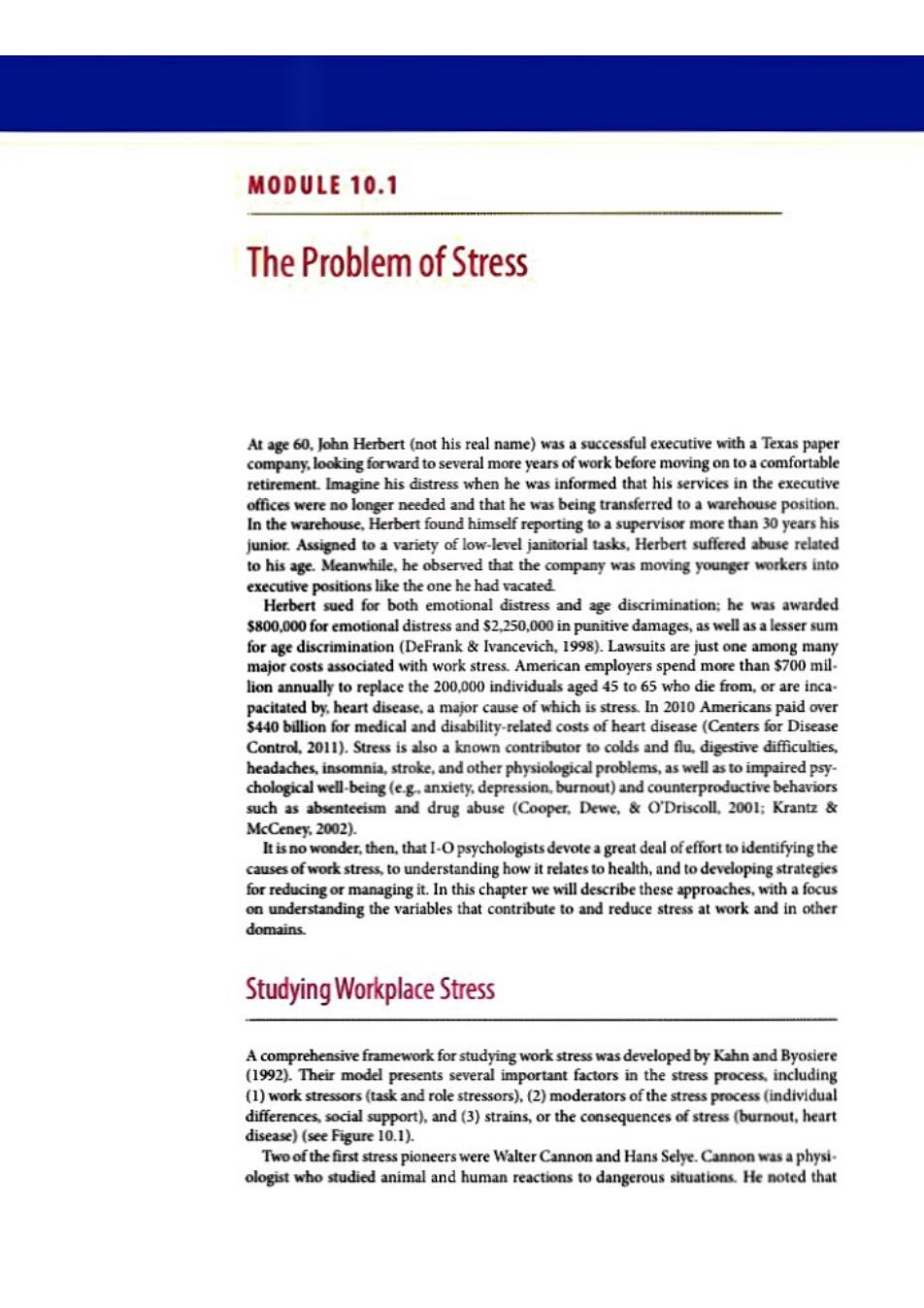正在加载图片...

MODULE 10.1 The Problem of Stress At age 60.John Herbert (not his real name)was a successful executive with a Texas paper company.looking forward to several more years of work before moving on to a comfortable retirement.Imagine his distress when he was informed that his services in the executive offices were no longer needed and that he was being transferred to a warehouse position. In the warehouse,Herbert found himself reporting to a supervisor more than 30 years his junior.Assigned to a variety of low-level janitorial tasks.Herbert suffered abuse related to his age.Meanwhile,he observed that the company was moving younger workers into executive positions like the one he had vacated Herbert sued for both emotional distress and age discrimination:he was awarded $800,000 for emotional distress and $2,250,000 in punitive damages,as well as a lesser sum for age discrimination(DeFrank Ivancevich,1998).Lawsuits are just one among many major costs associated with work stress.American employers spend more than $700 mil. lion annually to replace the 200,000 individuals aged 45 to 65 who die from,or are inca- pacitated by,heart disease.a major cause of which is stress.In 2010 Americans paid over $440 billion for medical and disability-related costs of heart disease(Centers for Disease Control,2011).Stress is also a known contributor to colds and flu,digestive difficulties, headaches,insomnia,stroke,and other physiological problems,as well as to impaired psy- chological well-being(e.g.anxiety,depression.burnout)and counterproductive behaviors such as absenteeism and drug abuse (Cooper,Dewe,O'Driscoll.2001;Krantz McCeney,2002). It is no wonder,then.that I-O psychologists devote a great deal of effort to identifying the causes of work stress,to understanding how it relates to health,and to developing strategies for reducing or managing it.In this chapter we will describe these approaches,with a focus on understanding the variables that contribute to and reduce stress at work and in other domains. Studying Workplace Stress A comprehensive framework for studying work stress was developed by Kahn and Byosiere (1992).Their model presents several important factors in the stress process.including (1)work stressors (task and role stressors).(2)moderators of the stress process (individual differences,social support),and (3)strains,or the consequences of stress (burnout,heart disease)(see Figure 10.1). Two of the first stress pioneers were Walter Cannon and Hans Selye.Cannon was a physi. ologist who studied animal and human reactions to dangerous situations.He noted that